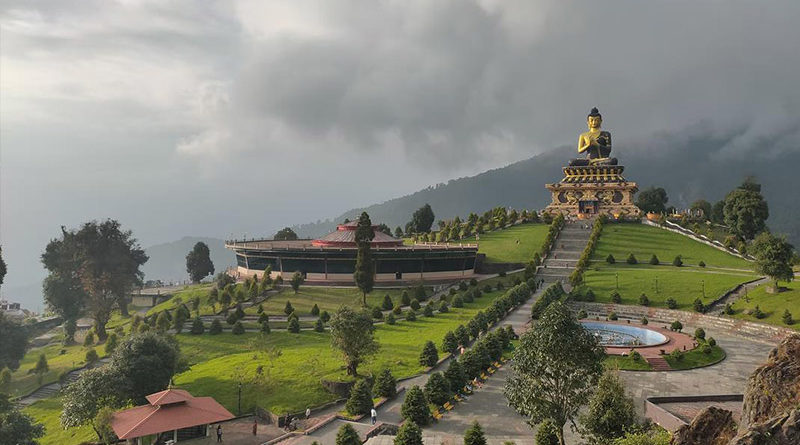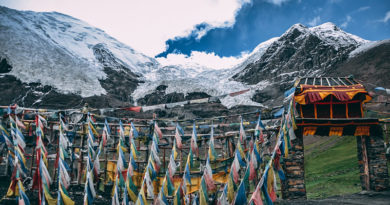Complete Guide about Sikkim: Traditional Games, Dance, and Food
Snowclad mountains welcome you when you land in Sikkim. It is a beautiful state in the North-Eastern part of India. Surrounded by the majestic Himalayan mountains, Sikkim’s view will leave you speechless. The state is a golden tourism spot with lakes, rivers, waterfalls, and breath-taking valleys in abundance.
Apart from the tourism angle, you are in for a surprise to their tradition, culture, folk activities, food, etc. Since it is a state of multiple languages and ethnicities, you are in for a treat!
Lepcha, Bhutia, and Nepalis constitute Sikkim’s population. As it is a blend, you can find various traditions and cultures seeping in. However, you will love to do activities that combine all three communities.
The traditional dance forms of Sikkim celebrate the important seasons of the state. You are sure to indulge yourself in foot-tapping music in no time! Similarly, the state has numerous food varieties and games to have a packed holiday.
Are you planning to take a trip to Sikkim to embrace their tradition? Well, this guide is all you have been looking for. Let’s get started with details of what makes Sikkim one of the rich cultural states in India.
If you want detailed information about National Parks in Sikkim, check out our article about National Parks in Sikkim – A Detailed Guide for Visitors
Traditional Games of Sikkim
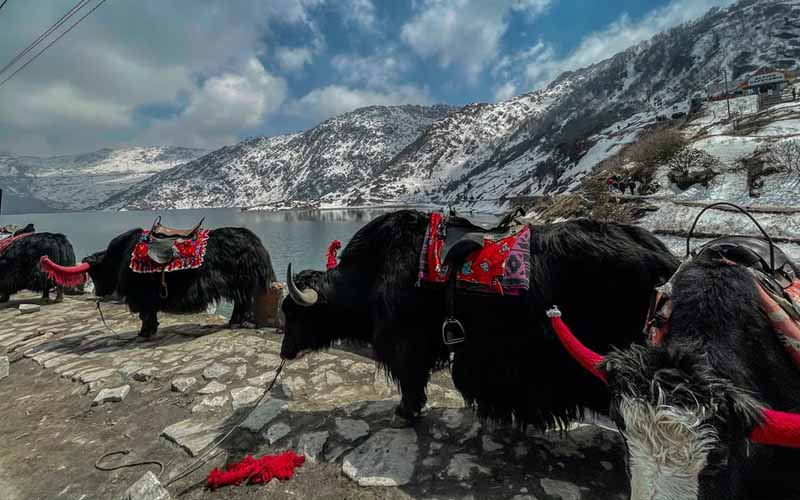
Sports and games are a common mode of entertainment in Sikkim. We have many personalities from this state representing India all over the world. However, when it comes to upholding tradition, the locals love playing a few games.
Let’s see some games that are indigenous and gaining popularity through Sikkim.
1. Sho
Loved by the locals, it is one of the most popular games in Sikkim. You can see the native people sitting around a table with the game accessories after a long day out. Sho or Shoh comes from the Tibetan word for dice. Yes, you got the idea! Sho also works on the lines of many dice board games.
The tradition was to play for money. That should get players interested! Sometimes, you can also play for fun without involving any monetary rules. Just grab a cup of coffee or juice, and sit down with your friends with a set of dice, coins, shells, a bowl, and a plate.
You can play with a maximum of four players or a minimum of two players. So, how is it played? A set of dice is rolled inside a bowl. After that, the player bangs it down on the plate kept on the table downwards. The surprise element is waiting once you lift the bowl.
The excitement builds as the user moves their stack of coins around the table through the shells. While the rules might sound confusing in the beginning, you will love it as the game proceeds.
The beauty of this traditional game lies in the materials used in the game accessories. Mostly, the bowl and plates are made of wood to signify the customs used in Sikkim.
2. Archery
Archery is a sport followed worldwide. However, bows and arrows are more than just a sport for Sikkimese people. The bows and arrows are bamboo material, and it is also an adventure sport for thrill-seeking tourists.
Moreover, a 10-day archery festival happens in December-January every year in Gangtok (the capital of Sikkim). Through the natives, this sport is still thriving. You can see many tourist places attracting tourists to try out this challenging sport.
Also, archery is a symbol of the harvesting season in Sikkim. You can see the locals celebrating a good harvest through this sport every year. Sometimes, many consider this game as a ritual for many occasions.
Apart from these, you can see tourists engaging in many thrilling sports all through the year. As Sikkim is home to many lakes, rivers, and streams, water sports are gaining momentum.
Tourists can try these adventure sports when going to Sikkim:
- River rafting
- Mountain biking
- Mountaineering
- Paragliding
- Rock climbing
Dances of Sikkim
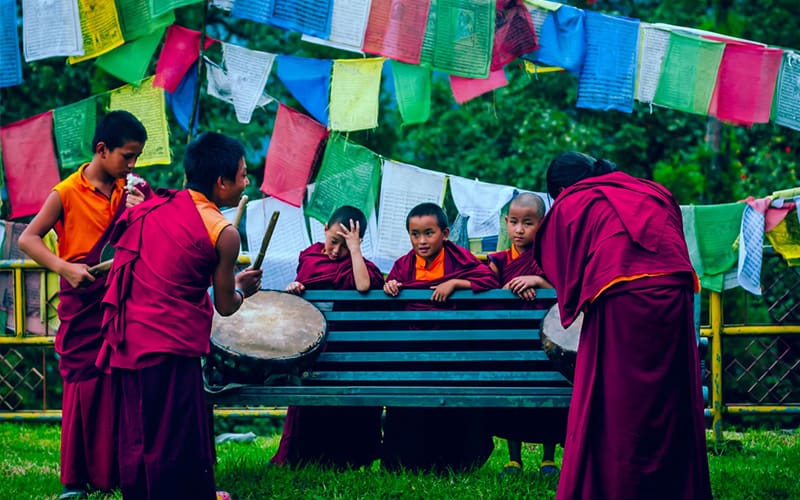
Lepcha, Bhutia, and Nepalis have rich music and folk dance in their culture. All these combined give numerous traditional art forms to the Sikkimese lifestyle.
Different reasons depict each dance form. Locals perform these rituals for harvest seasons, occasions, and prosperity. You can get to know about a few dance forms popular in Sikkimese culture here.
1. Maruni
Maruni is an integral part of the Tihar festival celebrated in Sikkim. Generally, male and female dancers beautify the art form of Maruni. Clad with shining ornaments, usually, three men and women dance around to the traditional Naumati Baja orchestra.
Nepalese love this dance form, as it is an important part of their custom. The main idea of including dance in their festivals is to triumph over evil with all the goodness. A specific community known as the Magars is the ones still keeping this dance form alive.
The songs and steps might vary according to the customs and traditions. However, it is a must-watch folk dance when you visit Sikkim.
2. Tamang Selo
Otherwise called “Damphu dance”, the native folk dance in unison to the music coming from the instrument known as Damphoo. The music is so lively that nobody can resist putting down their feet and dancing along.
The dancers carry their instruments while dancing in Tamang Selo. The Tamang community from Nepal are the prime followers of this dance form. All the clothes worn by dancers are colorful and striking.
Most of the Tamang Selo songs are melodious or slow to depict the sorrows, joys, and love in the day-to-day life of the Sikkimese people.
3. Zo Mal Lok
Harvesting season in Sikkim is of utmost importance to the locals. Once the year’s harvest is good, they celebrate it in many ways. Dancing and singing are one such mode. Zo Mal Lok is from the Lepcha community to thank the harvest gods for the produce.
Also, you see workers in farm fields taking a break from their strenuous and monotonous life through this dance form. All the farmers feel rejuvenated after having a small session of Zo Mal Lok.
The props of this dance include bamboo leaves and lamps in times of special occasion. Along with the sounds of nature, the dancers in their traditional clothes mix up a soothing tune that brings the surroundings to life.
4. Tashi Sabdo
Auspicious times in the Bhutia community are not complete without the Tashi Sabdo dance form. Many musical instruments go along with the dancers in soft and melodious tunes. All the performers have colorful clothes with scarves as props. Many festivals have this as a mandatory celebration. The youth of Sikkim are living up to the tradition with this dance. Most of the steps are repetitive, but you will love them. Hence, try attending a gathering specializing in this art form.
5. Yak Dance
Yaks are predominant in the North-Eastern part of India. Sikkimese pays tribute to this helpful animal through their Yak dance. People of Sikkim use Yaks to transport goods throughout the state. It is their way of saying “thank you!”.
While traveling to Sikkim, join them in thanking the Yaks in their style!
Apart from these, other popular dance forms include mask dance, Limboo, Lu Khangthamo, Rechungma, etc. Most of these dance routines thank god for the beautiful and reaping surroundings that made Sikkim what it is today. What good would-be knowing Sikkim without the knowledge of lip-smacking recipes? Read on to learn the traditional foods of Sikkimese culture.
Food of Sikkim
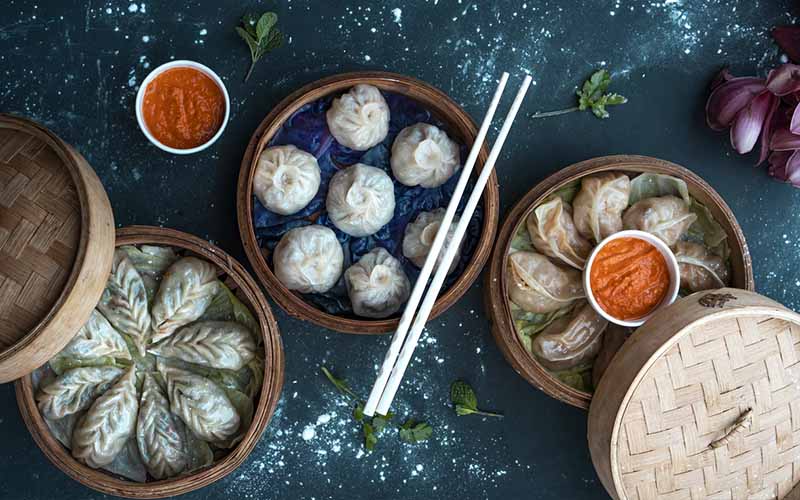
Like the dance and game forms, you can find a blend of all three major communities in the Sikkimese cuisine also.
You can include the Tibetan food culture as well. Most of their dishes have staple ingredients like rice, mushroom, bamboo shoot, pumpkin, pumpkin leaves, squash, etc. Besides these vegetarian inclusions, you will see many meat-eating locals.
The common meats used for their delicacies are mutton, beef, chicken, and fish. An everyday meal has either of these meats in different forms.
When it comes to the local flavors, the traditional foods Sikkim is known for are:
1. Thukpa
It is of Tibetan origin, and this dish has a combination of noodles, veggies in a soup format. Sometimes, meat lovers can go for meat in the place of vegetables.
A steaming bowl of soup with noodles and vegetables/meat will fill you in one serving alone. However, relishing the flavor will never stop you at one bowl!
Also, try the variants available in the local restaurants that serve Thukpa with hot red chili paste topping. The spice will make you love the cuisine more.
2. Soups like Gundruk or Sinki
Sikkim is famous for its soups made from local and earthy ingredients. In the case of Gundruk soup, it has leaves as the base form.
A combination of either radish, cabbage, or mustard leaves is the main ingredient in Gundruk. The process of fermentation of these leaves gives flavor to the soup.
Upon mixing with other common ingredients like tomato, onion, ginger, and chilies, a delicious bowl of soup is ready with a surreal taste.
Sinki is similar to the Gundruk soup. Radish roots are put in place of the leaves in this delicacy. The roots are put into bamboo shoots with vegetation for days. Upon fermentation, these roots make up the ravishing soup. They are perfect as a side dish also!
3. Curries and Rotis
A mix of wild ferns and cottage cheese (called Chupi) is a lovely dish indigenous to Sikkimese cuisine. In addition, with other spices and vegetables, curry is a staple side dish to rotis for the natives.
Similarly, Sikkimese utilizes bamboo shoots in their dishes also. Turmeric powder reduces the bitterness of bamboo. Once stewed for long hours, the curry turns aromatic and is a perfect complement to plain rice in many households in Sikkim.
Many varieties of roti are a crucial part of this lip-smacking cuisine. They are phapar ko roti (made from buckwheat), Kodo ko roti (made from finger millets), Dhiro (millet porridge), syal roti (made from rice flour), Zheroe (made from rice powder), and Chyadung Byasu (maize-based).
Apart from these, the street food of Sikkim is a big crowd-pleaser. Try out these delicious and simple local street foods to have a memorable experience:
● Momos or Steam Dumplings
These dumplings pack a punch in terms of flavor. A single bit transports you to heaven. Also, vegetarians can relish these veggie-filled dumplings with a side of spicy sauce. Most Indians consider this as their comfort food.
● Laphin
A mix of traditional noodles with soy sauce is sure to arouse food buffs following Tibetan and Chinese cuisine. The toppings further add to the flavor profile.
● Shyaphaley
It is a snack made in the form of pie with flour. Later, fillings like meat and vegetables are mixed and deep-fried. You are ready for another bite before even completing the first one!
All the beverages you get in Sikkim are mostly homemade. Wines and alcoholic drinks contain traditional ingredients like rice, millet, barley, yam, banana, etc. Take home a bottle of these lovely drinks to have a trip close to your heart!
Local shops also sell many spices and fermented foods that taste heavenly when mixed with certain dishes. Try getting cardamom, tea, and dry ingredients like Gundruk, nakima, and kinema to add a new flavor profile to your home cooking!
Sikkim travelers will never miss out on the foods listed above. On that note, have a conversation with locals to understand the depth and love mixed in their cuisine. Moreover, all the dishes use local produce and stay true to the culture of Sikkim.
Final Thoughts
Sikkim is a place with abundant culture. You can find unique dance forms, cuisines, and games that give happiness to the audience.
Additionally, a trip to Sikkim will fulfill all your desires. You can soak in the beauty of this awesome Himalayan foothill state with a plate of dishes that give you total warmth.
Dance to their tunes, relish their native ingredients, cuisine and play a few sports to have the time of your life. We hope this guide will throw light on the traditions of Sikkim worth knowing. Plan a trip to this snow-filled state to have a holiday that goes in your memories forever!
